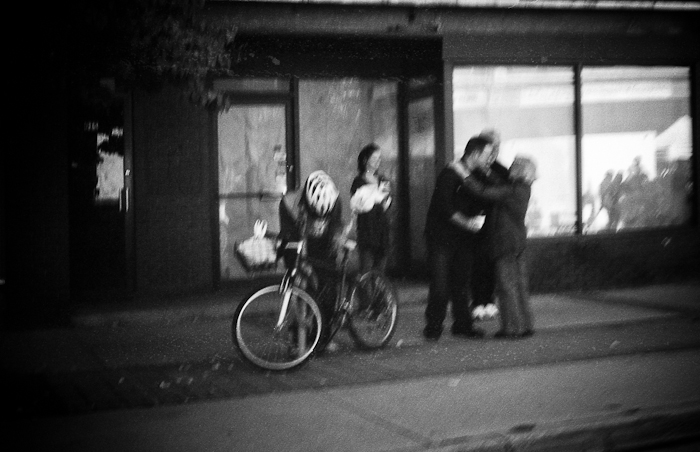For us on Earth, would it be possible to elaborate on this subject. Or maybe clue us to a work that simply explains FS and Vignettings relationship. Thanks for the post.
hello, of course i´ll try to explain it simple.
I´ll talk about fast lenses but not aspherical fast lenses.
In order for a lens to be fast it must have a larger glass that can gather more light.
In order to do so the diameter of the glass must be increased.
and thus the aperture will achieve 1.4, 1.2, 0.95 etc which is a relation based on focal length, thats why the diam pupil of a 50mm lens at 1.4 is different than a 1.4 aperture of a 35mm focal length lens, bla, bla , bla...
With this clear we can talk about wether we want focus shift or vignette for supper...
the best example i can find about is the comparison tween v3 and v4 of the leica summicron 35mm.
The v3 vignettes but it´s focus shift is negligible, on the contrary the v4 which is famous and to my taste the most beautiful leica lens, has no vignette but tons of focus shift...i tested two copies and each one had the same FS, one different focus point for each aperture tested on my m9. I sold it immediatelly once noticed this....Also i´ve made tests in various other lenses observing exactly the same behavior.
When you have already an f2 capability doesn´t mean you also have delt with vignette, for avoiding this thing you must increase further the front element in order to illuminate the corners...and doing this, means you are entering focus shift territory...
FS is produced when you set your rangefinder at a given distance with a large aperture then extreme peripheral light beams (of this increased aperture) enter the lens and hit the focal plane but don´t match it, the effect is rangefinder at 1mtr resulting focus at 95 cm! ...for shooting hydrants or dark park benches it doesn´t matter! but for making portraits it´s a miserale fail!
Then FS is the incapacity of the lens to direct these peripheral beams into the same point as the center part beams.
On the contray the beams of the center part of the lens don´t show this behavior since diffraction won´t casue them the same misseffect, check a slow perfect lens as the best lens ever the elmar 5cm 3.5...
Vignetting is produced when larger apertures can´t illuminate frame edges.
And so i can´t stand missfocus, but i can live with vignette!
Bye!





